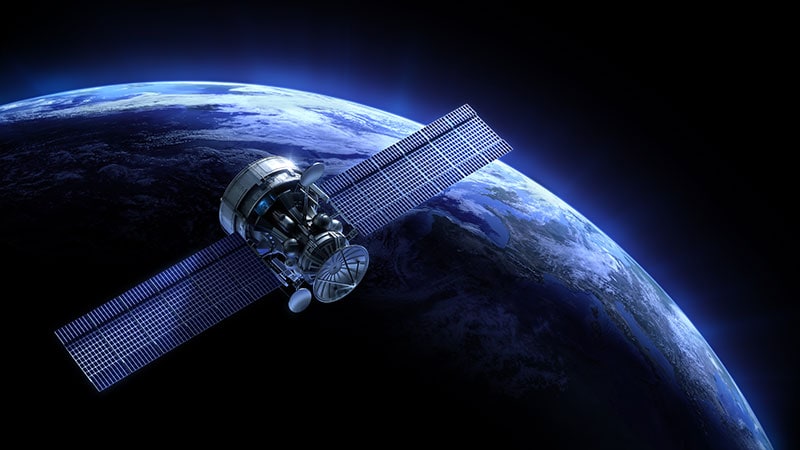SAN DIEGO — No matter where on Earth you live, there’s likely to be an eye in the sky hovering over you. That’s a good thing, at least when it comes to satellite monitoring of air quality, said scientists from the National Aeronautics and Space Administration, known as NASA.
In a special symposium held at the American Thoracic Society (ATS) 2024 International Conference, NASA health and air quality specialists described the use of space-based systems and earth science applications to improve understanding of respiratory health risks worldwide and to help enrich pulmonary research with galaxies of data.
“Every day we download over 25 terabytes of data,” said John Haynes, MS, program manager for Health and Air Quality Applications in the Earth Action Program, Earth Sciences Division, NASA, in Washington, DC.
“Many of the observation datasets are critical for healthy air quality applications: Observation of land surface temperature, sea surface temperature, precipitation, fires and thermal anomalies, aerosols, just to name a few. And the really awesome news is this offering from our constellation of satellites is free and open access, available to everyone across the globe,” he said.
The mission of NASA’s Earth Action Program is “to enable people and organizations to apply insights from Earth science to benefit the economy, health, quality of life, and environment.”
Program staff work with both industry and nonprofit environmental advocacy and health groups to help inform their decisions and actions with Earth science information.
NASA supports the use of Earth observations to help monitor and manage infectious diseases and environmental health, toxins and pathogens that affect health, and air quality standards and to assess the effects of climate change on air quality and public health.
Haynes noted that worldwide, six major cities have incorporated NASA data on fine particulate matter smaller than 2.5 µm (PM2.5) into their climate action plans. These cities include Accra, Ghana; Addis Ababa, Ethiopia; Buenos Aires, Argentina; Guadalajara, Mexico; Lima, Peru; and Johannesburg, South Africa.
Monitoring Pollution With Tropospheric Emissions: Monitoring of Pollution (TEMPO)
There are more than 30 Earth-monitoring systems currently in orbit or soon to be launched, including NASA’s TEMPO, launched in April 2023. Its first operations, or “first light” in space speak, began in August 2023. The instrument is in a geostationary orbit about 22,236 miles above the equator at longitudes that allow it to survey virtually all of North America — from coast to coast and from southern Mexico, Cuba, Puerto Rico, and the Bahamas to Northern Canada.
TEMPO is part of a geostationary air quality satellite “constellation” or group that provides daylight observation over the entire Northern Hemisphere, explained Aaron Naeger, PhD, MS, mission applications lead for TEMPO at the NASA Marshall Space Flight Center in Huntsville, Alabama. Until TEMPO, space-based instruments had relatively low spatial resolution and could only capture one image each day.
In contrast, TEMPO can scan East-West continuously each daylight hour across an entire coverage area (known as the Field of Regard) and even more frequently during early morning and late afternoon. This allows researchers to measure volumes of pollution, sources, and variation of pollution levels over time. The system measures ozone levels, nitrogen dioxide (NO2), formaldehyde, and aerosols.
More than 100 federal, state, local, and tribal air quality agencies use the data captured by TEMPO to inform public health efforts.
Naeger gave examples of how the system can help identify public health hazards. For instance, scans over Texas on November 1, 2023, showed high NO2 levels from cities, traffic corridors, power plants, oil and gas fields, and fires. Similarly, the system detected unhealthy ozone and PM2.5 levels during prescribed burns in April 2024. The system also found notable differences between weekdays and weekends in NO2 concentrations across California and the Front Range in Colorado, including higher levels along traffic corridors during weekdays due to higher traffic volume and tailpipe emissions.
Fire and Heat
Other NASA health and air quality initiatives include the FireAQ project, based at the University of Iowa in Iowa City, Iowa, which provides free online weekly briefings on fire-related air quality concerns using data from TEMPO and other NASA satellite systems. The project was described by Jun Wang, PhD, from the University of Iowa.
NASA also fosters collaborations to reduce health disparities in air quality and respiratory health in urban heat islands and other areas affected by extreme temperatures due to climate change, as discussed by Christopher K. Uejio, PhD, from Florida State University in Tallahassee, Florida.
Air pollution expert George D. Thurston, ScD, professor of medicine and population health at the NYU Grossman School of Medicine, NYU Langone Health, New York City, who attended the session, commented that the PM2.5 standard includes nontoxic particulate matter, such as soil, and misses submicron-sized particles and asked Haynes whether measurements of smaller particles were being measured in the studies he described.
Haynes replied that the systems do not directly measure PM2.5 but instead rely on aerosol optical depth, a measure of the extent to which atmospheric particles absorb or scatter sunlight.
Thurston, who in 1987 was coauthor of groundbreaking study showing the link between PM2.5 levels and mortality, is now an advocate for a tougher standard of measuring ambient ultrafine particles with an aerodynamic diameter less than 1 µm in size.
NASA health and climate data are available freely at https://www.earthdata.nasa.gov/.
Haynes and Naeger are both NASA employees. Thurston had no relevant disclosures.
>>> Read full article>>>
Copyright for syndicated content belongs to the linked Source : Medscape – https://www.medscape.com/viewarticle/nasa-air-quality-data-could-inform-knowledge-respiratory-2024a10009uw
